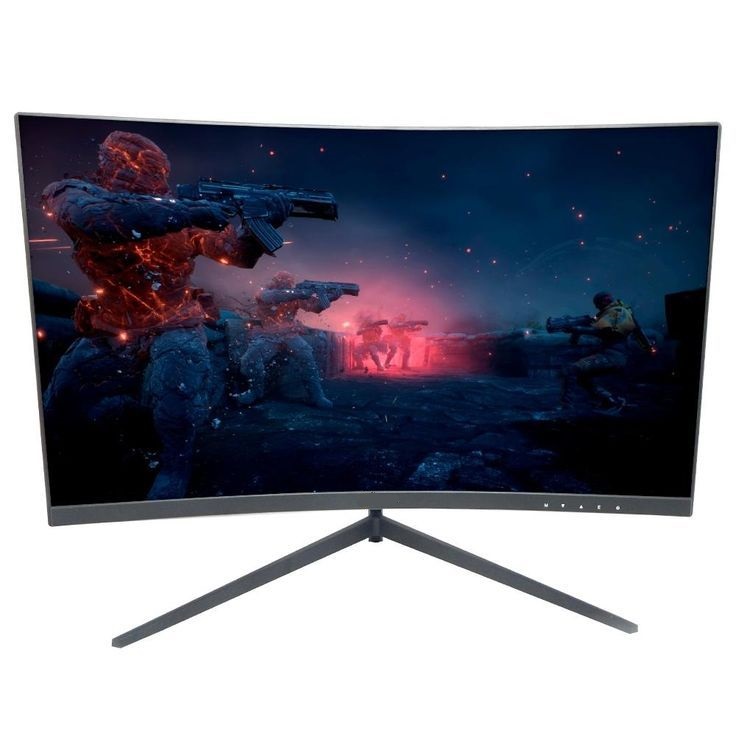In the realm of gaming, your monitor is the window to another world. It’s where all the action unfolds, making it a crucial component of your gaming setup. Whether you’re a casual player or a competitive gamer, selecting the right gaming monitor can significantly impact your performance and enjoyment. This guide will help you understand what to look for in a gaming monitor and how to choose the perfect one for your needs.
Why Your Gaming Monitor Matters
Your monitor is more than just a display; it’s where every detail of your gaming experience comes to life. The right gaming monitor enhances image quality, responsiveness, and overall. Here’s why investing in a high-quality gaming monitor is essential:
- Visual Clarity
A high-resolution monitor with vibrant colors and sharp details enhances your gaming experience by providing a more engaging and realistic environment. Games become more engaging when you can see every detail clearly, from the intricate textures of a fantasy world to the fine print on your game’s user interface.
- Smooth Gameplay
Monitors with high refresh rates and low response times ensure that your gameplay is smooth and fluid. This is especially important in fast-paced games where quick reactions and accurate movements are crucial. A high refresh rate reduces motion blur and screen tearing, providing a competitive edge.
- Comfort and Ergonomics
A monitor with adjustable features like height, tilt, and swivel allows you to customize your viewing position for maximum comfort. Proper ergonomics can reduce eye strain and neck pain during long gaming sessions, helping you stay focused and comfortable.
Key Features to Consider
When choosing a gaming monitor, several key features can impact your overall experience. Here’s what to look for:
- Resolution
Resolution determines the clarity and detail of the image on your screen. Common resolutions for gaming monitors include:
- 1080p (Full HD): Adequate for most gamers, offering good image quality at a lower price point.
- 1440p (Quad HD): Provides sharper images and more detail than 1080p, suitable for mid-range to high-end gaming.
- 4K (Ultra HD): Offers exceptional image quality with four times the detail of 1080p, ideal for high-end gaming setups and future-proofing.
- Refresh Rate
The refresh rate is the number of times the monitor updates the image per second, measured in Hertz (Hz). Higher refresh rates result in smoother motion and better responsiveness. Common refresh rates include:
- 60Hz: Standard for everyday use but may not be sufficient for fast-paced gaming.
- 120Hz-144Hz: Popular among gamers for smooth and fluid gameplay.
- 240Hz-360Hz: High-end monitors offering ultra-smooth motion, perfect for competitive gaming.
- Response Time
Response time measures how quickly a pixel can change from one color to another, affecting motion clarity and ghosting. Lower response times are preferable for fast-moving scenes. Look for monitors with response times of 1ms to 3ms for optimal performance.
- Panel Type
The type of panel affects color accuracy, contrast, and viewing angles. Common panel types include:
- IPS (In-Plane Switching): Known for vibrant colors and wide viewing angles but may have slightly slower response times.
- TN (Twisted Nematic): Offers fast response times and high refresh rates but may have less accurate colors and narrower viewing angles.
- VA (Vertical Alignment): Provides good contrast and deep blacks but may have slower response times compared to TN panels.
- Adaptive Sync Technology
Adaptive sync technologies like NVIDIA G-SYNC and AMD FreeSync help eliminate screen tearing and stuttering by synchronizing the monitor’s refresh rate with your graphics card’s frame rate. This results in smoother gameplay and a more enjoyable experience.
- Connectivity
Ensure the monitor has the necessary ports for your gaming setup. Common connections include HDMI, DisplayPort, and USB-C. Additional features like built-in speakers or USB hubs can also be convenient.
Top Gaming Monitors to Consider
Here are a few highly recommended gaming monitors that excel in various aspects:
- ASUS ROG Swift PG259QN
- Resolution: 4K
- Refresh Rate: 360Hz
- Panel Type: IPS
- Features: NVIDIA G-SYNC, ultra-fast response time
- Dell Alienware AW2521H
- Resolution: 360p
- Refresh Rate: 360Hz
- Panel Type: IPS
- Features: NVIDIA G-SYNC, customizable RGB lighting
- Acer Predator XB271HU
- Resolution: 1440p
- Refresh Rate: 144Hz (overclockable to 165Hz)
- Panel Type: IPS
- Features: NVIDIA G-SYNC, adjustable stand
- Samsung Odyssey G7
- Resolution: 1440p
- Refresh Rate: 240Hz
- Panel Type: VA
- Features: FreeSync and G-SYNC compatible, curved display

